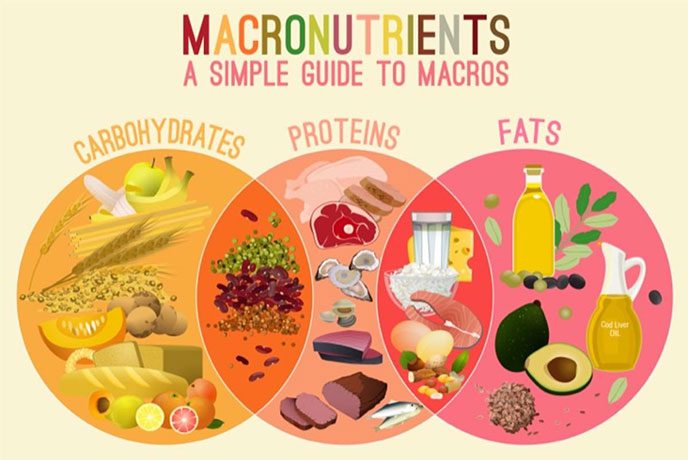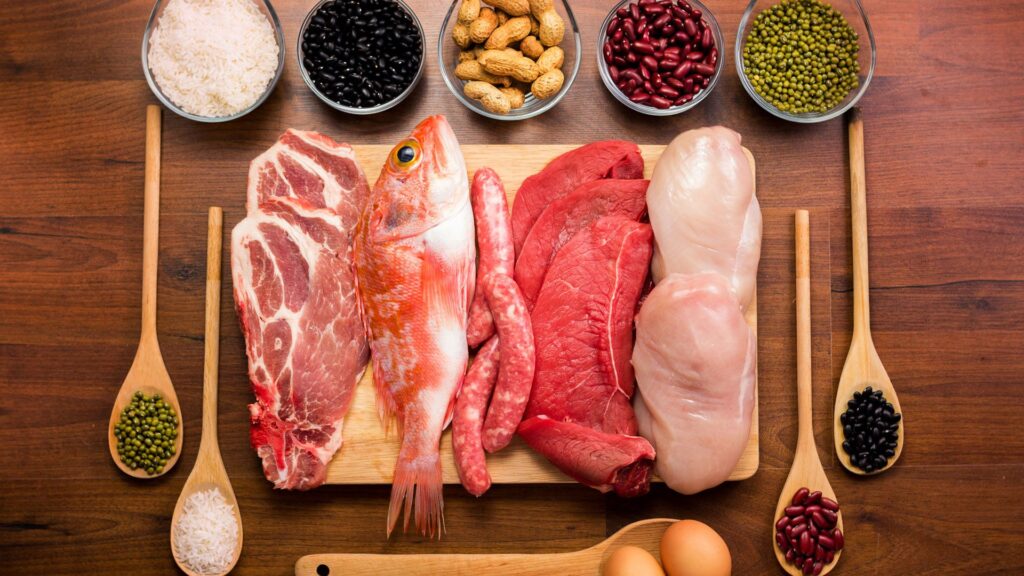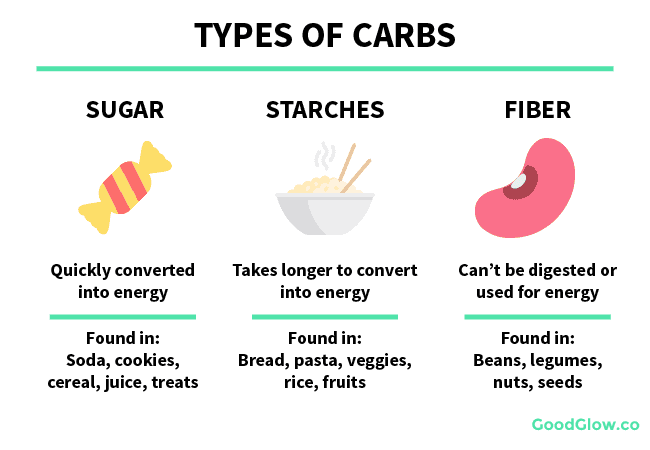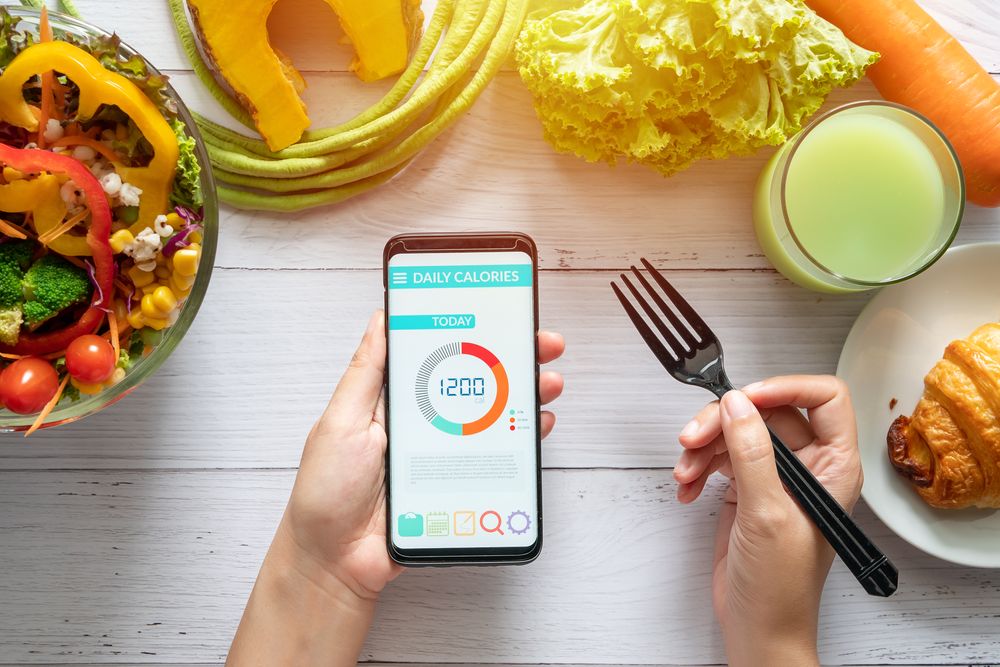Learn how to maintain a low fat percentage! The Macros Secret.

Learn the basics
Macronutrients (macros) are the body’s primary source of energy, with vitamins, minerals, and phytonutrients—micronutrients—offering a supporting role. Macronutrients consist of the proteins, carbohydrates, and fats contained in the food we consume. Except for alcohol, macros account for all the calories we get from what we eat and drink. Each of the macros plays a distinct role in developing and maintaining fitness and health.

1. Protein
Proteins help build and maintain lean muscle mass. Proteins also build, maintain, and repair body tissue, which is especially important to the recovery process after a workout. Protein is the building block of muscle. Without enough of it, your lean body mass becomes increasingly vulnerable during weight loss. Studies have found, however, that increasing the proportion of protein to carbohydrate in the diet of adult women during weight loss has positive effects on everything from body composition.

2. Fats
Fats help regulate hormones and all types of fats should be part of a healthy diet, unsaturated fats should be the predominant kind, with saturated and trans fats held to a minimum
The percentage of macros in a diet has a direct effect on the body’s ability to perform and recover from exercise, control hunger, and gain or lose weight. However, as many of you are probably aware, losing excess body fat doesn’t always seem to be that simple. At the end of the day, when it comes to weight loss, some women may ultimately face additional challenges.
On average, women naturally have less lean muscle mass and more body fat in comparison to men. Your body requires more calories to maintain muscle mass compared to fat, which means that at rest, men’s bodies naturally burn more calories than women’s. Because men naturally tend to have more muscle mass, which requires a higher caloric intake, they also have more calories to play with when it comes to restricting their diets.
That ultimately means that compared to women, men can usually maintain a higher caloric intake and still lose weight. It also means that men may be able to lose weight more rapidly compared to women. For instance, if you’re a woman eating 1,800 calories a day and need to drop down to 1,300 to lose weight, that’s going to be a considerably more difficult task in comparison to a man dropping from 2,800 calories to 2,300.

3. Carbohydrates
If you are following a carb-based nutritional plan Carbohydrates are the primary energy source for the body and the brain, but if you are following a keto-based nutritional plan then fats will be the main source of energy for muscles and brain as well as for other organs.
In nutrition, “carbs” refers to one of the three macronutrients. The other two are protein and fat. Dietary carbohydrates have three main categories:
- Sugars. These are sweet, short-chain carbohydrates found in foods. Examples are glucose, fructose, galactose, and sucrose.
- Starches. These are long chains of glucose molecules, which eventually get broken down into glucose in the digestive system. The fact of the matter is that many women don’t get enough protein in their daily diets, especially when they’re trying to lose weight. While reducing your calories is important for weight loss, you don’t want those reductions to come from your protein intake. Instead, focus on reducing your carbs to achieve your deficit which will help you minimize glycogen storage and tap into fat storage.

4. Calories
Each macro has a certain number of calories per gram. A gram of protein or carbohydrate equals four calories. A gram of fat equals nine calories.
If drinking alcohol is part of the equation, that needs to be accounted for, too. Alcohol has seven calories per gram. One of the most important aspects of reaching your weight loss goal is consistency. A pretty easy way to stay consistent with your diet is by counting macronutrients (macros).
One of the reasons many women are unable to lose weight is simply because they aren’t able to find a diet that they can stick to. That’s because many weight-loss diets tend to place all kinds of restrictions on the types of food you can eat. But ultimately, if you’re not eating things that you enjoy from time to time, it’ll be next to impossible to keep up your diet for an extended period.
This is precisely why many women have turned to counting macros for weight loss. With the macros diet, as long as you are hitting your calorie and macro goals, you can eat a whole variety of different foods and you can lose weight. Your daily calorie goal will be what we just went over: you’ll be going for between 250 – 500 calories. Your macros goals are going to determine how you distribute all of your daily calories amongst your 3 macronutrients: protein, carbohydrates, and fat.
The macro profile for each person is dependent upon their goals. Here’s a cheat sheet to get you started:
- To build muscle: 30-40% carbs, 25-35% protein, 15-25% fats
- For fat loss: 10-30% carbs or less based on the plan for eg keto then you should keep the carbohydrate intake to 20 to 30 grams maximum for best results. 40-50% protein, 30-40% fats
- To maintain: 30-50% carbs, 25-35% protein, 25-35% fats
- Ectomorphs (thin, small bones) can handle a higher percentage of carbs (around 55 per cent), with moderate protein (25) and low fats (20).
- Mesomorphs (athletic) call for a more balanced percentage (40 for carbs, 30 each for protein and fats).
- Endomorphs (larger bones, higher fat mass) are better suited for fewer carbs (25), a moderate amount of protein (25) and lower fats (20).
Note:- This is an overall study about the subject and not keeping in mind any individual person or goals. This means that you need to plan your meals based on your goals and duration to achieve the goals.
“Push harder than yesterday if you want a different tomorrow.”
